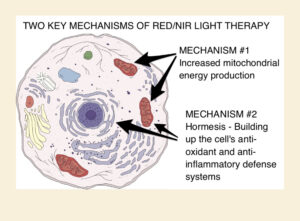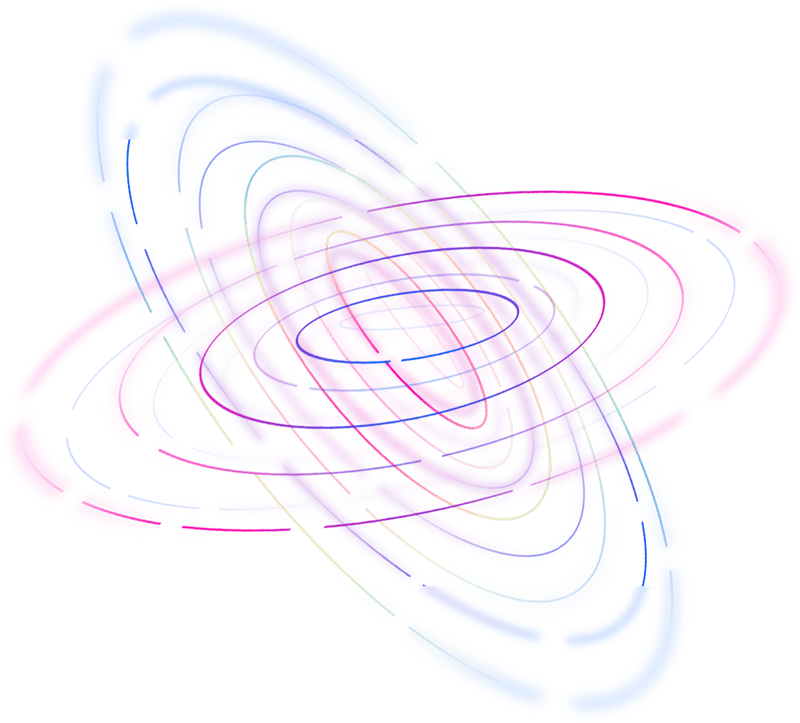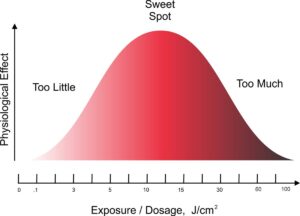R
ed Light
Red Light Therapy is nothing new. It’s actually one of the oldest methods of healing, as all of these spectrums of red light originate from Sunlight (and Fire Light). Today we are deficient in “Sun” which we all know because we equate sunlight with Vitamin D. Technology has allowed us to harness the sunlight’s healing ability. But if you want, I would literally just go outside.

Red Light Therapy
Just like my previous blog about earthing, stepping outside on God’s green earth barefoot, the Sun is also free and made by God. It took us thousands of years to discover the healing benefits of the sun which God knew in one second when he created it. We have been fed information that the sun is dangerous. But what if it is only dangerous when the real danger is lack of sun? The more sun you get on a normal basis, the more your body creates melanocytes that help protect your skin from UV light. You can’t just run a marathon if you’ve never ran before. Just like a marathon, you can’t just go out in the sun for prolonged periods if you haven’t been exposing yourself on a regular basis.
I recently injured my Achilles Tendon and developed Osteoarthritis in my left foot. I researeched Red Light therapy so it could heal faster. I read The Ultimate Guide to Red Light Therapy by Ari Whitten. He is one of the first persons to research and use Red Light Therapy bulbs for healing. I know what you are thinking. You want to jump on Amazon and buy one. I wouldn’t just buy any red light therapy device. I would get one that is third party tested which Ari Whitten recommends in his book. After seeing what Red Light Therapy can do for healing, I immediately got one. But I am on a budget so I got one from Red Light Man. And let me tell you! It is excellent! It comes from Europe but it only took a week to get to me.
SO MANY BENEFITS!
-Increases Energy
-combats Aging!
-Speeds up Fat Loss
-Improves muscle recovery and performance
-Improve Mood and Cognition
-Speed up healing from Injury
-Improve Metabolism and Hormonal Health!
Mechanisms of Action

Excerpt
1. Molecular Mechanisms:
Cytochrome c oxidase: This is a photoreceptor located on mitochondria in our cells that “accepts” light photons and then triggers events in the mitochondria. (More detail on this below.)
Retrograde mitochondrial signaling: This is a key factor where mitochondria in the cells communicate with the nucleus of the cell about what is going on, thus affecting what genes get expressed in the DNA-containing nucleus of our cells.
Light-sensitive ion channels: There are channels in our cells which control the flow of various ions (e.g. calcium, potassium, sodium, etc.). Some of these are affected by light, and then are involved with triggering further events in the cell or between cells.
Adenosine triphosphate (ATP): This is cellular energy produced by mitochondria. One of the more notable findings from many studies is that exposure to red/NIR light increases levels of ATP production.
Cyclic AMP: This is involved with opposing inflammatory pathways, among other functions in the cell.
Reactive oxygen species (ROS): These are also commonly called “free radicals.” While commonly associated with bad things (e.g. cell damage, oxidation, etc.), they also play vital roles in our bodies as signaling molecules. For example, ROS are produced from physical exercise and signal many of the positive adaptations that our body makes to exercise.
Calcium: Red/NIR light can affect calcium levels in the cell, which in turn act as a signal for numerous cellular processes.
Nitric oxide (NO): It is known that NO levels rise after red/NIR light exposure. NO is well known by most people for its role in blood vessel dilation, but it also acts in many other signaling pathways. (More on this below.)
Nuclear factor kappa B: This is a signaling compound that regulates many genes involved in inflammation and cell survival to stressors.
RANKL: A protein involved in bone regeneration/remodeling. Hypoxia-inducible factor: A protein involved in cellular adaptation to low oxygen levels.
Akt/GSK3b/b-catenin pathway: This pathway relates to cell survival and apoptosis (programmed cell death).
Akt/mTOR/CyclinD1 pathway: Involved in cell growth signaling. ERK/FOXM1: Involved in regulating cell division. PPARy: Involved in the inflammatory response.
RUNX2: Involved in bone cell differentiation.
Transforming growth factor: Stimulator of collagen production (e.g. in the skin).
Pro- and anti-inflammatory cytokines: Many pro- and anti-inflammatory cytokines and mediators have been shown to have their levels altered by red and near-infrared light exposure.
Vascular endothelial growth factor: Involved in angiogenesis—the formation of new blood vessels.
Hepatocyte growth factor: Involved in liver cell health.
Basic fibroblast growth factor and keratinocyte growth factor: Involved in the wound healing process.
Heat-shock proteins: Involved in inflammation, wound healing, and cellular survival against many types of stressors (e.g. exercise, sauna/heat stress, etc.).
Melatonin: Interestingly, red/NIR light therapy has been shown to increase “extra-pineal” production of melatonin outside of the pineal gland. Melatonin is much more than just a sleep inducing hormone as most people know it—melatonin has critical roles in protecting the mitochondria from damage and supporting glutathione levels, which is one of our body’s most powerful and important antioxidants and detoxifying compounds. Some researchers have suggested that this increased melatonin may be a significant factor in the effects of red/NIR light.31 Brain-derived neurotrophic factor: Involved in neuron/brain cell growth and regeneration.
2. Cellular Mechanisms:
Inflammation: One of the most important cellular mechanisms that red/NIR light have is their effect on inflammation pathways. It appears to do this through inhibition of inflammatory prostaglandin PGE2 production and expression of COX-1 and COX-2, as well as inhibition of the NF-kB pathway. The net effect: Reduced inflammation.
Cytoprotection: Various studies have shown that red/NIR light can help protect cells from dying after being exposed to various toxins (e.g. methanol, cyanide, etc.). It appears to have cell-protective effect in some instances.
Proliferation: Some types of cells (e.g. skin cells, bone cells, cells that line blood vessels, etc.) have been shown to grow and replicate faster with exposure to red/NIR light.
Migration: Some types of cells (e.g. tenocytes in tendons or melanocytes in skin) need to actually move to get to the location they’re needed. Some research has shown that red/NIR light can stimulate this.
Protein Synthesis: Red/NIR light can also stimulate cells (e.g. skin cells, bone cells, etc.) to produce more proteins (e.g. collagen).
Stem Cells: Stem cells are apparently even more sensitive to red/NIR light. Red/NIR light has been shown to positively affect growth, movement, and viability of stem cells. This may be relevant to both stem cells already present in our body, as well as in the context of stem cell therapy.
3. Tissue Mechanisms:
Muscles: Numerous studies have shown that red/NIR light affect muscle performance, recovery from exercise, and adaptations (i.e. enhanced strength, endurance, muscle growth, fat loss) to exercise.
Brain: Red/NIR light has been shown to benefit brain function as well. Studies have shown improvements in cognitive performance and memory, improved functioning after traumatic brain injury, improved mood, as well as improvements in certain neurological diseases (e.g. Alzheimer’s disease). The improvements in mitochondrial function, reduction in inflammation, and increased Brain-Derived Neurotropic Factor (BDNF) likely all play a role in enhancing neuron health.
Nerve (Pain): Some studies have shown that red/NIR light can dull pain due to blocking conduction at nerve fibers. Anti-inflammatory actions, as well as blocking of substance P, likely play a role in this effect.
Healing (Bones, Tendons, and Wounds): Numerous studies have shown that red/NIR light can stimulate and accelerate healing of numerous types of injuries—from tendon/muscle/ligament tears to bone fractures, and skin wounds. This is likely by affecting local growth factors involved in cellular repair, as well as effects on the inflammatory processes.
Hair: Red/NIR light is also used in the context of hair re-growth, and numerous studies have shown it to be effective for this purpose. This is likely due to local blood vessel dilation and anti-inflammatory effects.
Skin: Numerous beneficial effects on skin wrinkling and laxity, cellulite, collagen production and other aspects of skin health have been found. Anti-aging of the skin is one of the most common uses for red/NIR light.
Fat: The exact mechanisms of how this happens are still debated among researchers, but numerous studies have shown that red/NIR light can stimulate the release of fatty contents from fat cells, and ultimately, lead to body fat loss.


VISIBILE
Light is a part of the electromagnetic spectrum. Visible light is roughly 400 nanometers (nm) to 700 nm.

INVISIBLE
Near-Infrared Light (NIR) (~700-1100 nanometers) is INVISIBLE.

Depth of penetration
Wavelength(nm)/ Color
150-380 / UV
390-470/ Violet to Deep Blue
475-545 / Blue-Green
545-600 / Yellow to Orange
600-650 / Red (penetrates Hypodermis)
650-950 / Deep- NIR (penetrates Hypodermis) invisible
950-1200 / Near infrared (NIR) (invisible)

5 Types of bioactive lights
Blue Light for Circadian Rhythm
UV light for bacteriocidal/ VitaminD synthesis
Red & NIR for Mitochondrial (cell) health/ healing
Far Infrared for Heat / Detox
Research
Scientific Research on Red Light Therapy
UV Sunlight

Dose Matters
…

